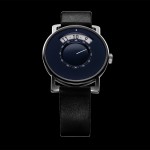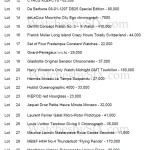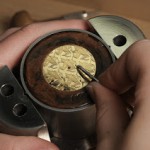Up Close: MIH Gaïa Watch
Simple and smart.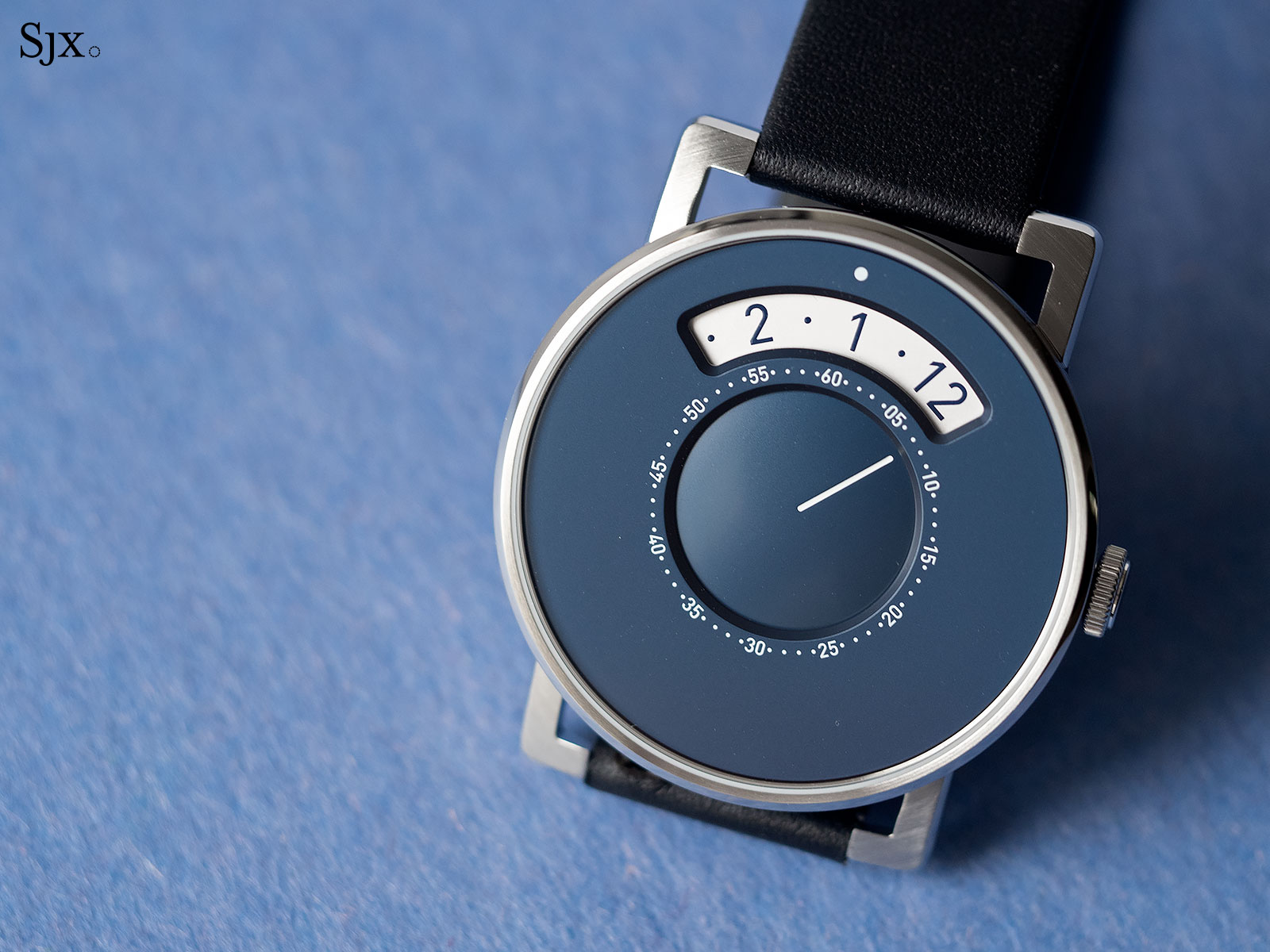
Announced last year as a fundraising project for the Musée International d’Horlogerie (MIH), the MIH Gaïa was delayed for a couple of months due to the pandemic-induced shutdown in Switzerland, but the 200-piece limited edition was recently completed and is now being delivered.
Inspired by the Brutalist style of the museum building, the Gaïa watch is a clean but smart design that combines a novel time display with a well-finished case. And importantly, proceeds from its sale go to the MIH, an important horological institution that’s the largest time-measurement museum in the world.
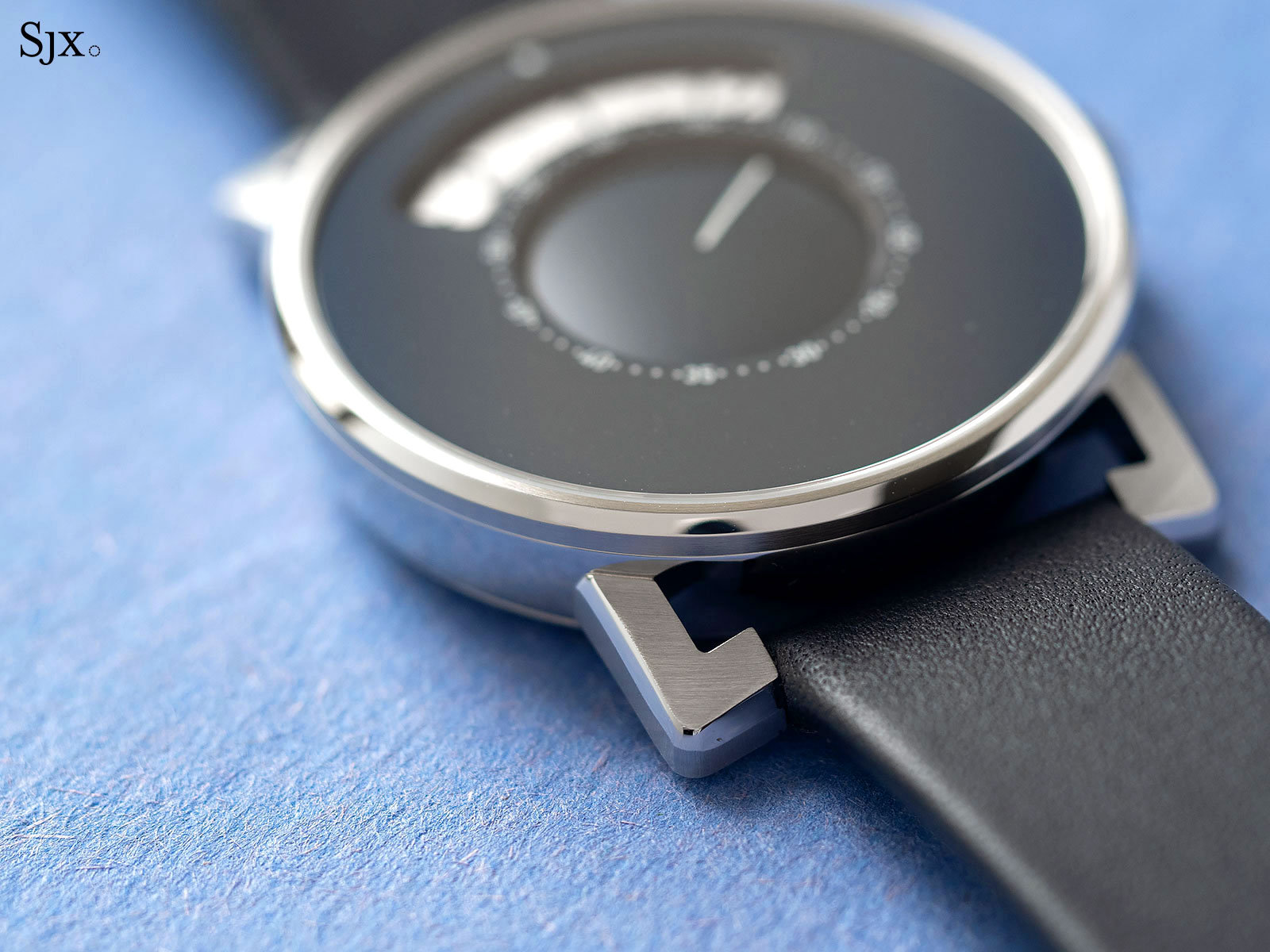
Initial thoughts
Attractive in design and feel, the Gaïa is an honest product that helps a good cause. Although the style is minimalist, the design incorporates elements that give it a distinctive appearance, most notably the angled lugs and domed minute disc. Although the watch is not large, it has good presence on the wrist as a result of the design.
The time display seems unconventional at first, but is actually straightforward, relying on discs instead of hands for both hours and minutes.
Reminiscent of a weighing scale, it’s easy to read, though the hour disc looks initially odd because the numerals are arranged anti-clockwise. The minute disc, on the other hand, is conventional but one of the defining visual elements of the watch, thanks to the fact that it’s recessed and slightly spherical.
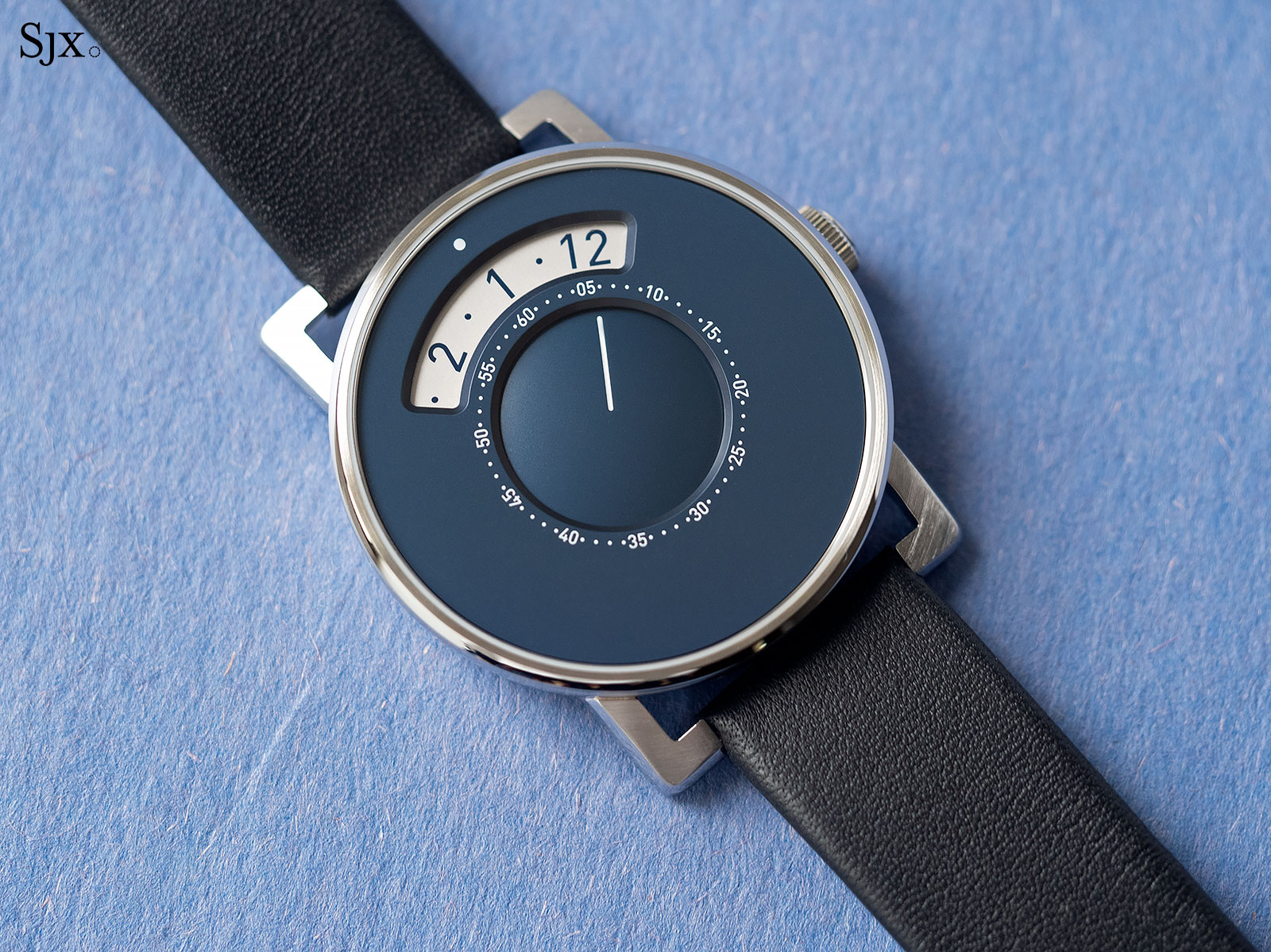
The case is worth pointing out for its form and finish, especially on the lugs. They have alternating brushed and polished surfaces that emphasises their intriguing inward and upward angle. Granted, some of the case finishing is a bit uneven on the lugs, but that is forgivable since it appears more hand finished than most watches at this price point.
Mechanically the watch is ordinary, but good enough. The recognisable and squeaky sensation when winding the watch via the crown gives away the Sellita movement inside.
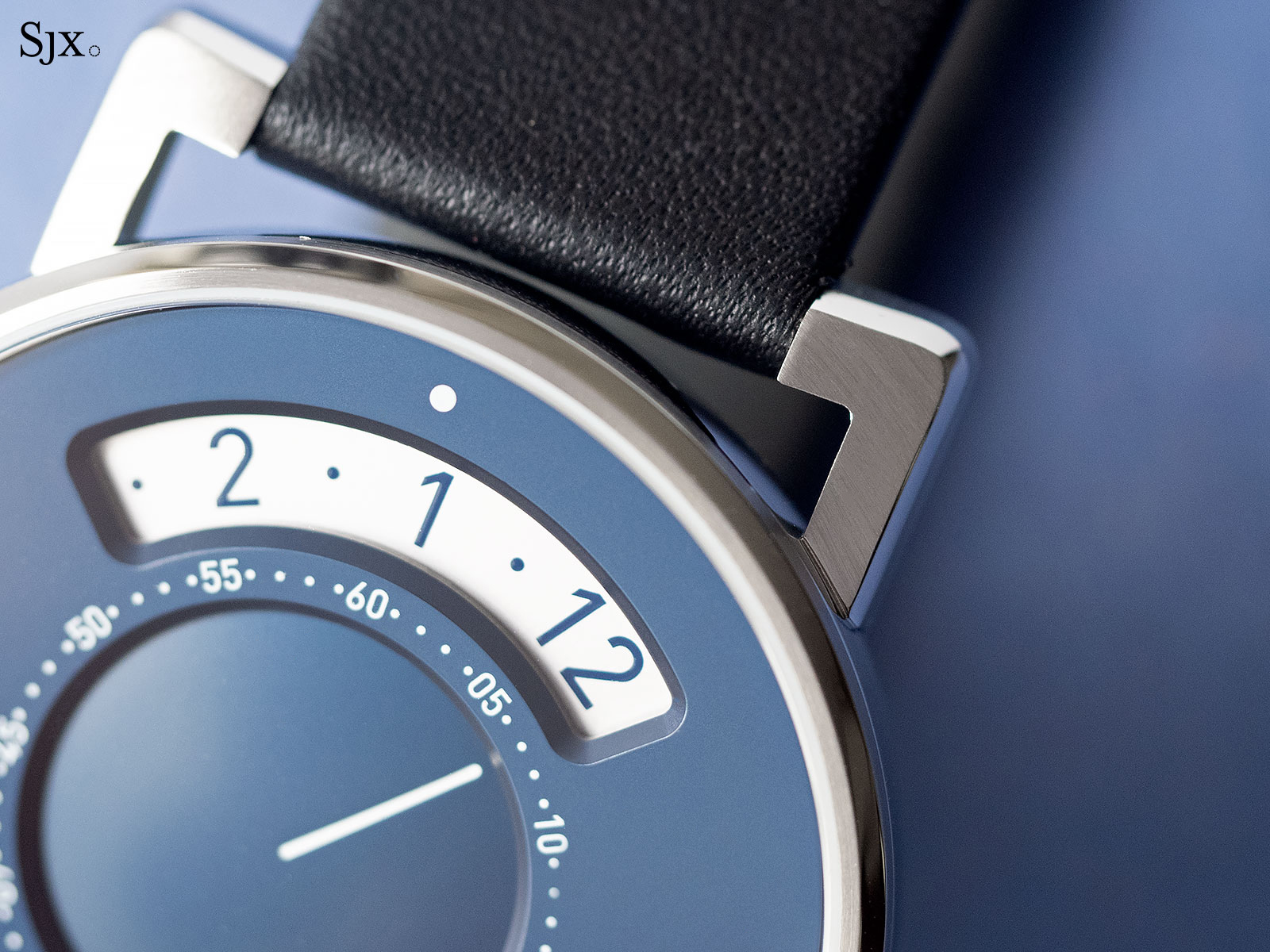
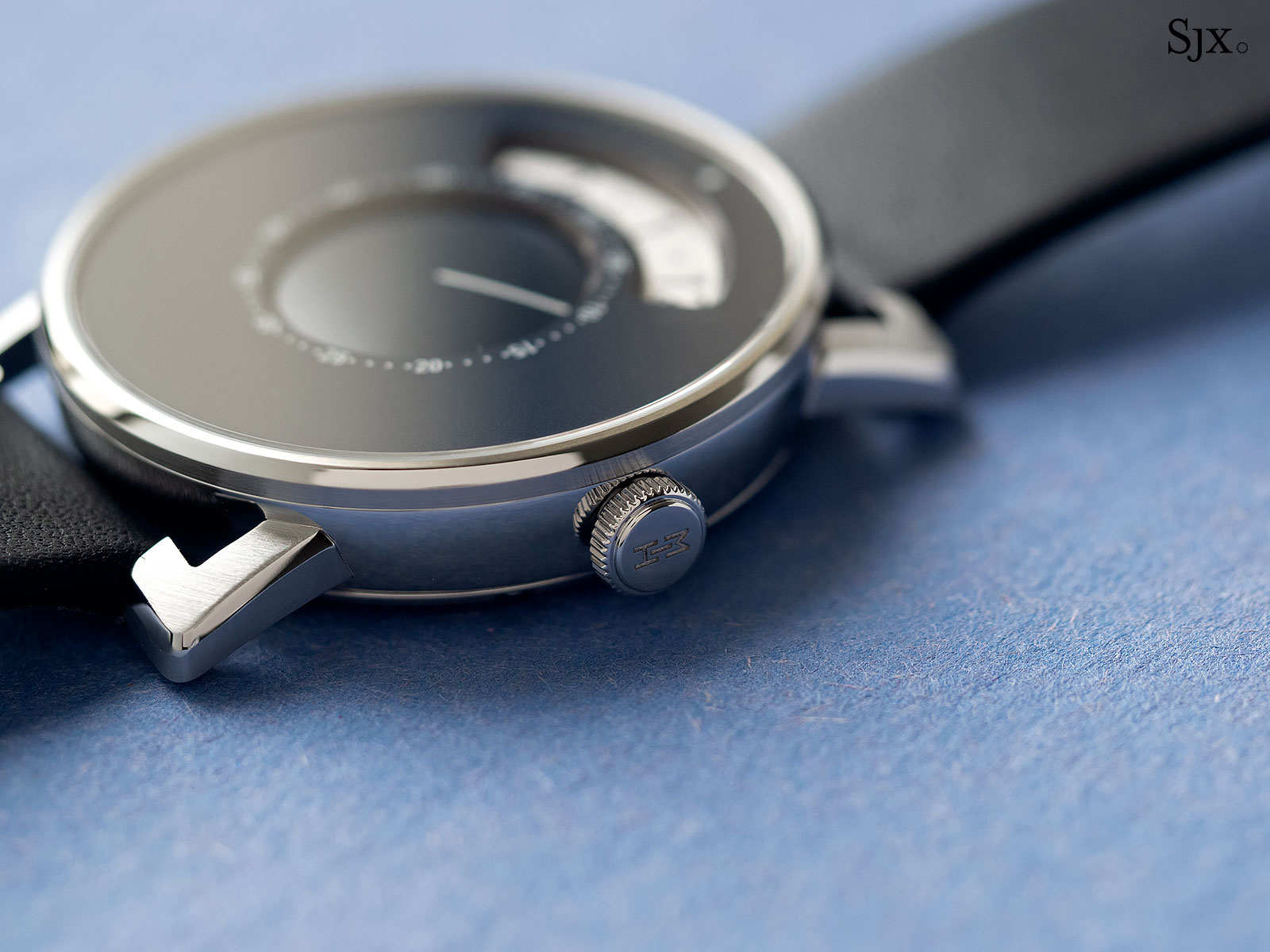
The Gaïa watch cost about US$3,200 (preorders placed last year cost a little less), which is good value, especially for the quality of the dial and case. That’s not strikingly cheap, but it’s priced well enough, especially since the watch funds the museum.
Though the first run was a limited edition of 200 that’s sold out, MIH will be launching additional iterations in the future, so there will be more available. Ordinarily, reproducing a sold-out limited edition is not cool, but in this case I hope the MIH does more of it. Offering a well-priced, smartly-designed watch is a useful way of raising funds for the museum, especially compared to typical museum merchandise of t-shirts, mugs, and fridge magnets. I do look forward to future versions of the watch.
The museum
Located in La Chaux-de-Fonds, the Musée International d’Horlogerie, or International Museum of Horology, is one of Switzerland’s leading watch museums.
Having developed out of the timepiece collection of the local watchmaking school that opened in 1865, the museum has been owned by the town since 1902. Its collection is a diverse representation of timekeeping and watchmaking over the centuries – with its oldest object dating to the 16th century – ranging from automatons made by Pierre Jaquet Droz to pop-art Swatch watches that resemble vegetables.
The MIH is also responsible for the Prix Gaïa, an annual award widely respected within the industry that “[honours] men and women who have dedicated their career to the measurement of time”. Past winners are an all-star cast of entrepreneurs, engineers, and artisans, including Luigi Macaluso, Gunter Blumlein, Philippe Stern, Richard Daners, and George Daniels.
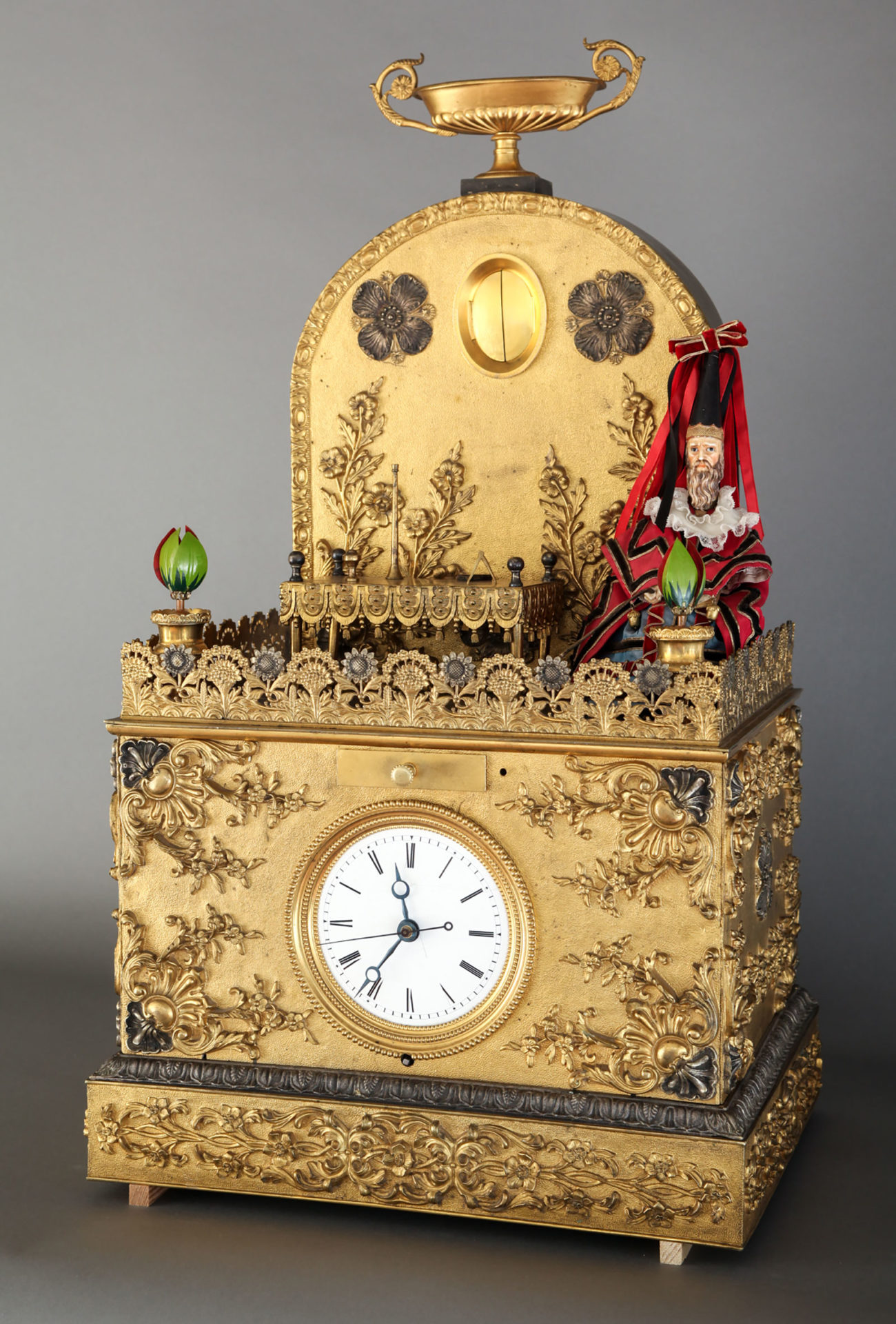
One of the objects that will be restored thanks to the watch is the Grand Magicien automaton that was made around 1830 and features a wizard figure that answers questions fed into the mechanism. Photo – MIH
Taking its name from the prize, the MIH Gaïa watch is first and foremost a fundraising exercise for MIH. Specifically, the proceeds from the watch will support the restoration of timepieces and objects in the MIH collection, many of which were made in its hometown or the surrounding area of the Vallee de Joux, the historical heart of watchmaking in Switzerland.
And the watch is also made locally – literally – with all of its constituent components coming from suppliers in La Chaux-de-Fonds, including the movement from Sellita and the dials from Jean Singer & Cie. And whatever that wasn’t done locally was still within the region, including the design that was the work of Atelier XJC in nearby Neuchâtel.
Simplicity done well
The Gaïa watch is a simple watch conceived for a good cause, but one that is it well executed.
The premise of the time display is simple: a “rising hour” display along with a disc for the minutes. While it’s a fairly unusual display, it is mechanically straightforward and cost efficient. No modification was done to the base movement, and neither was a module needed, instead the display merely replaces conventional hands with discs.
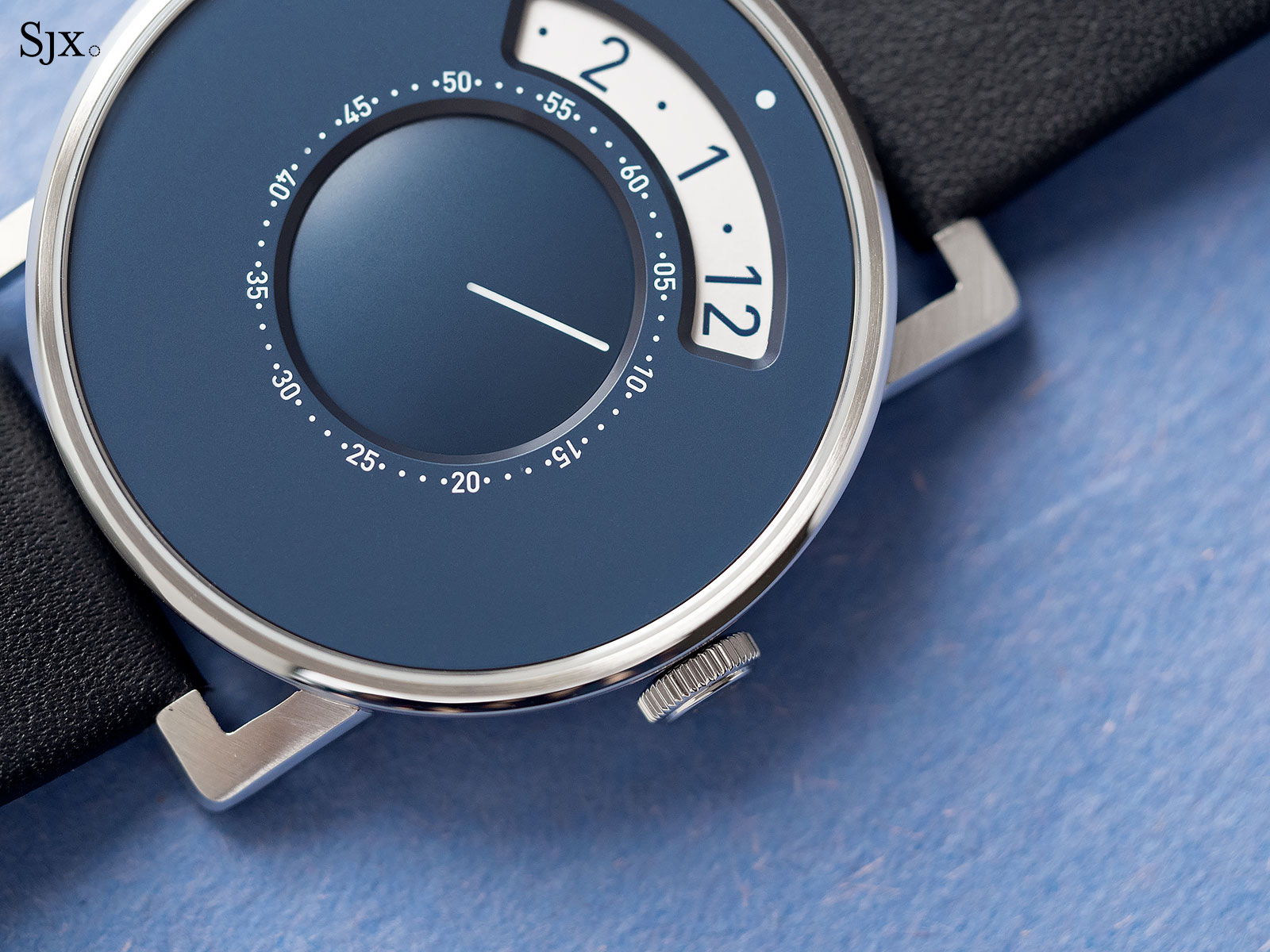
Though easily legible, the hour display takes some getting used to. It’s initially confusing because the hours disc moves clockwise, but the numerals counterintuitively go counter-clockwise.
While the display is simple in design and function, it manages a surprising degree of visual depth. The outer dial is relatively thick, seemingly more like a plate over the hours disc. Its height emphasises the sunken minute disc in the centre, which is actually prominently domed and more like the top of a sphere. This subtle but important detail is actually a reference to the Prix Gaïa trophy, which is a crystal sphere with a column extending out from its centre, much like the hand of a watch.
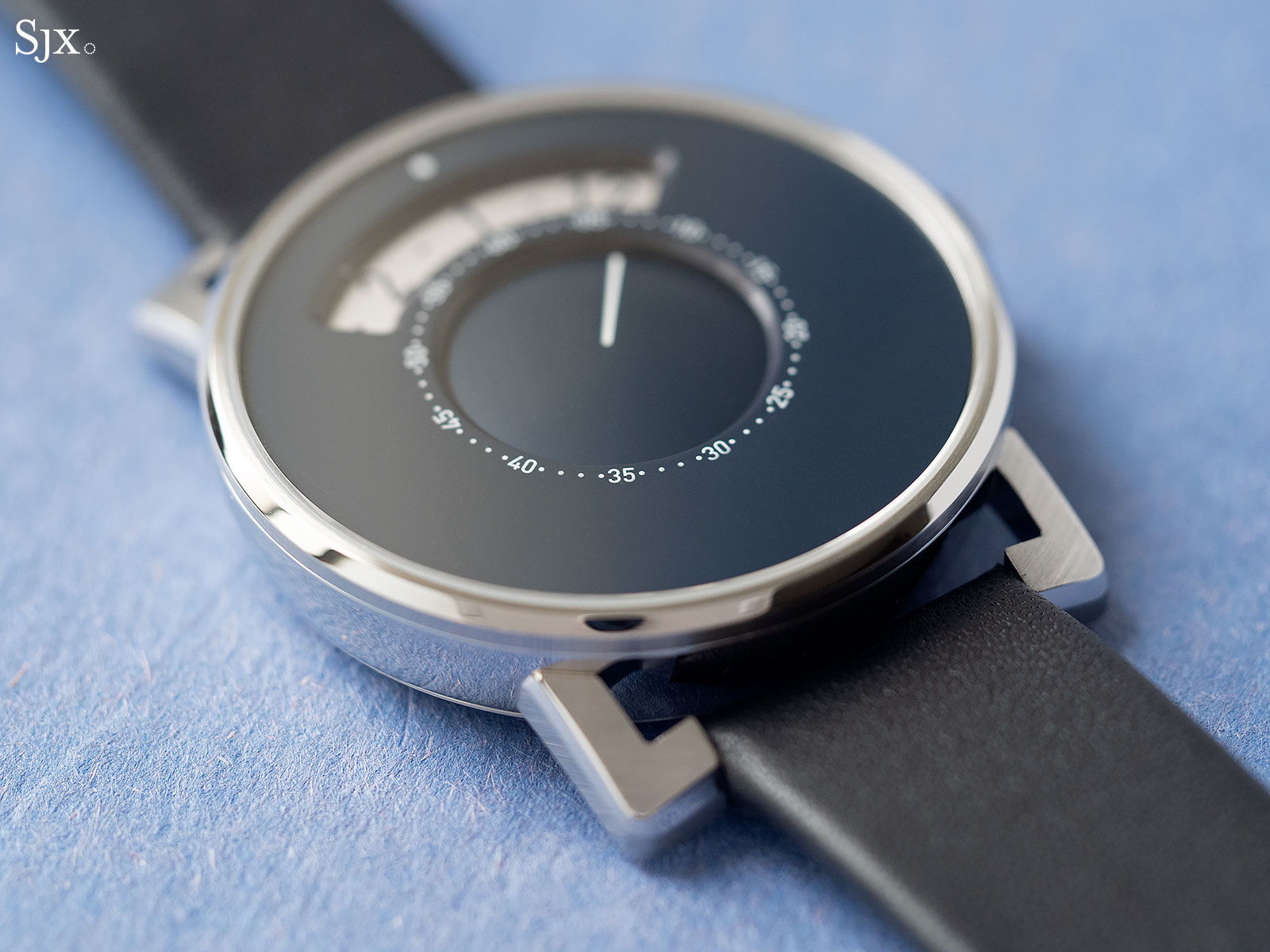
And like the rest of the watch, the dial is done well. It’s a dark blue that’s the official colour of the MIH. Finished entirely with a smooth, sandblasted finish, it’s stamped brass that’s coated via physical vapour deposition (PVD), while the disc is rhodium plated. And all the printed markings are sharply defined, even up close.
The domed minute disc is particularly impressive with its gentle curve, enough that MIH cited dial maker Jean Singer for “taking up the challenge of manufacturing the distinctive domed central disc”.
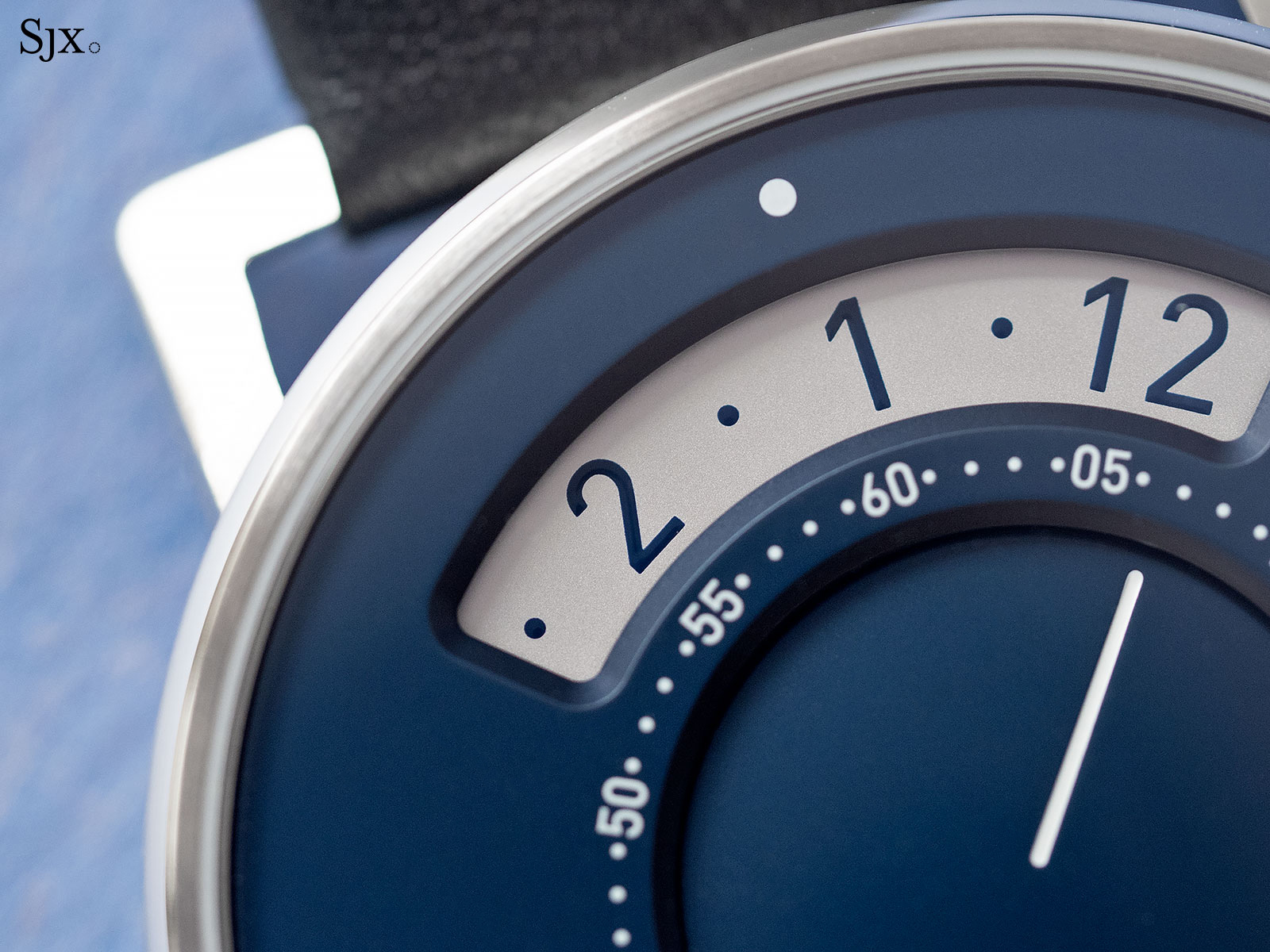
Making a brutalist case
The design of the watch was inspired by the museum building, a Brutalist construction designed by Pierre Zoelly and Georges-Jacques Haefeli that was started in 1972 and finished two years later. Known as the Gnomon Project, the pair’s design beat out over 30 other entries to win the 1968 design competition for the museum.
Made up of vast expanses of raw concrete and gently rounded lines, the museum’s design is most obvious in the case, especially the lugs. Shaped like wire lugs but substantial and pronounced, the lugs are the defining element of the case design.
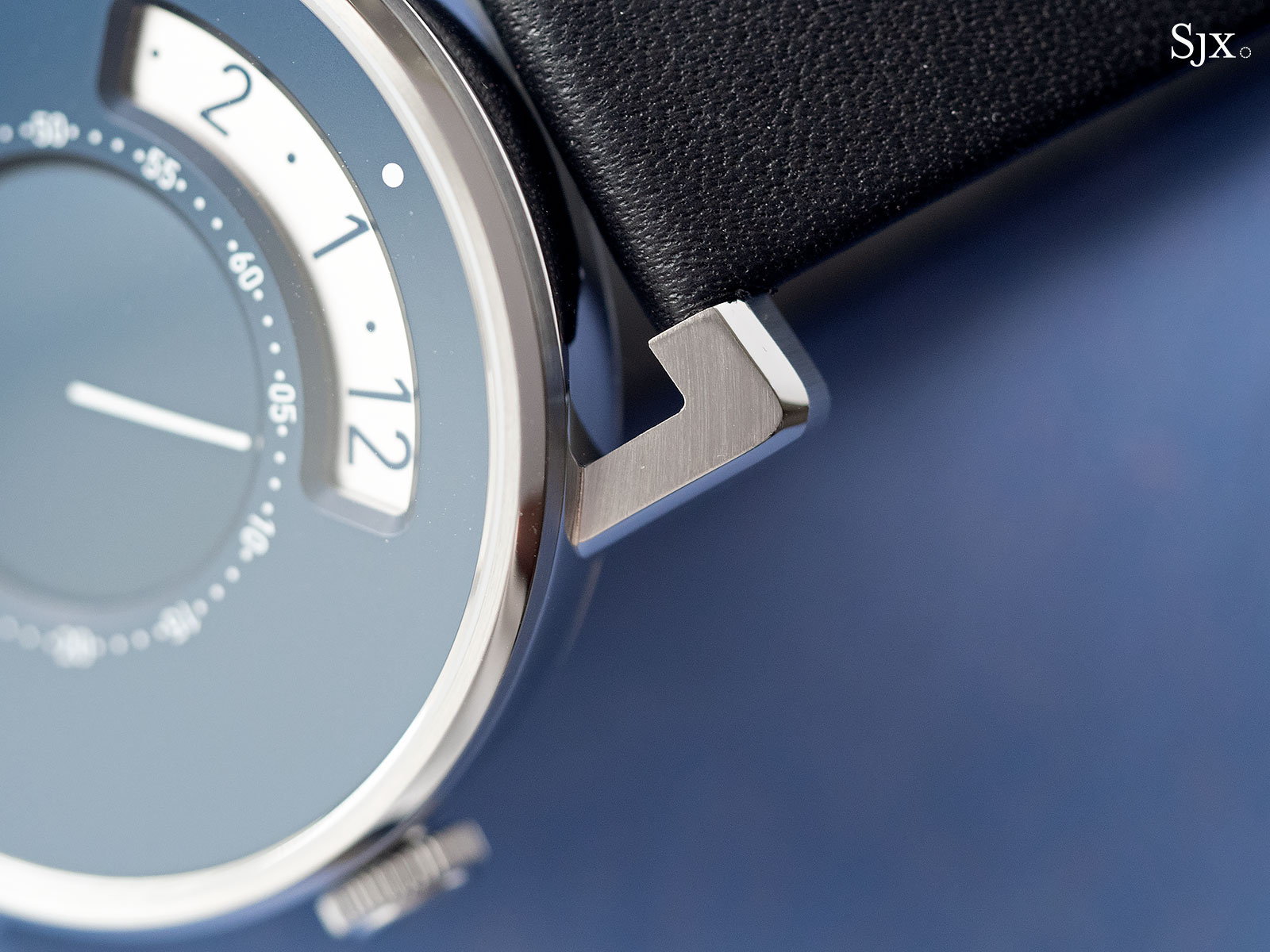
The lugs have a finish that’s pleasingly elaborate, especially given the price of the watch. They are circular grained on the top, with polished, bevelled edges, and vertically-brushed on the flanks. The finish on the edges of the lugs is slightly irregular, but this is an indication the finishing was done by hand.
And the same can be said of the bezel, which has a brushed finish on the side and top, with a polished, sloped plane in between.
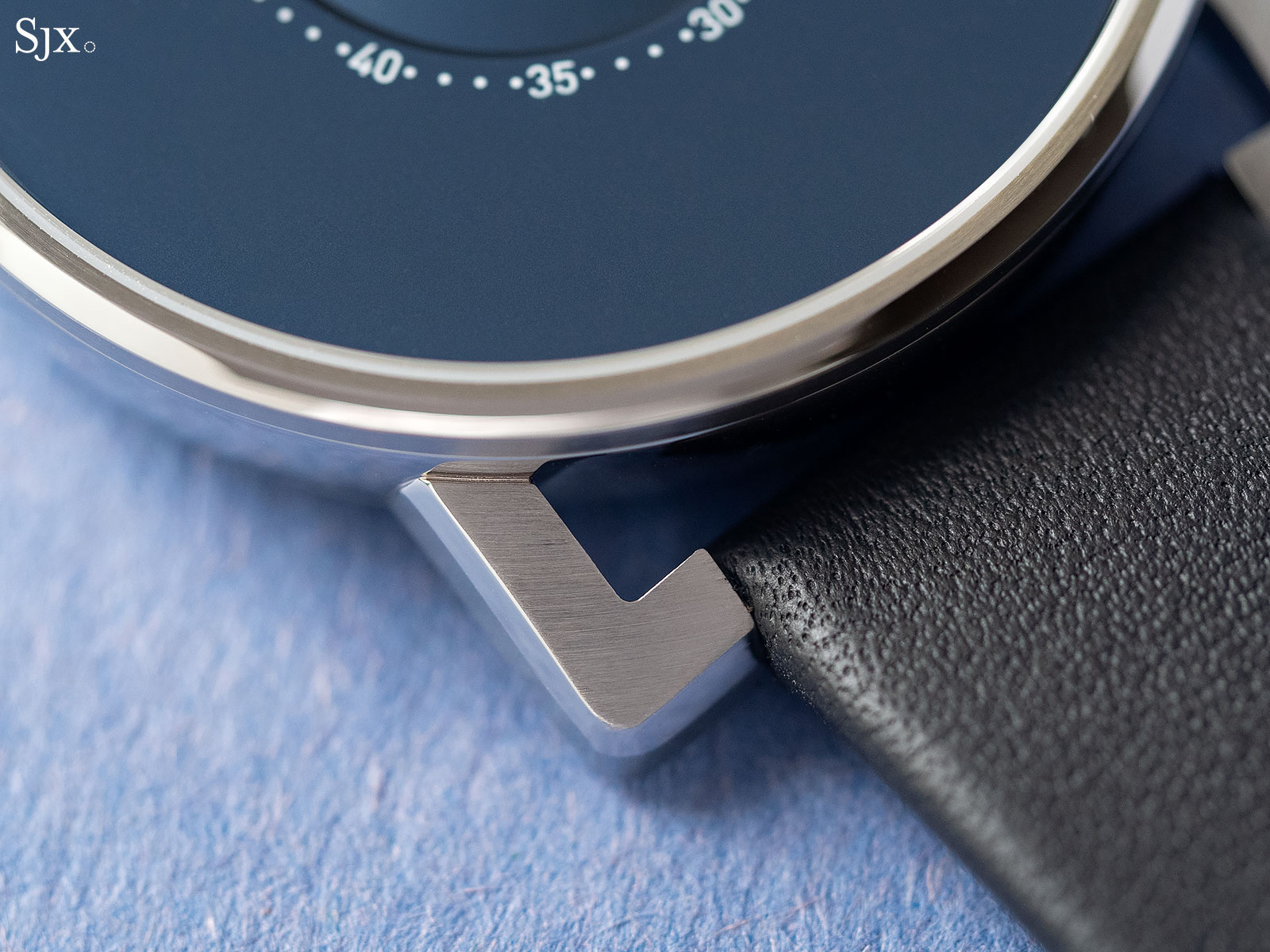
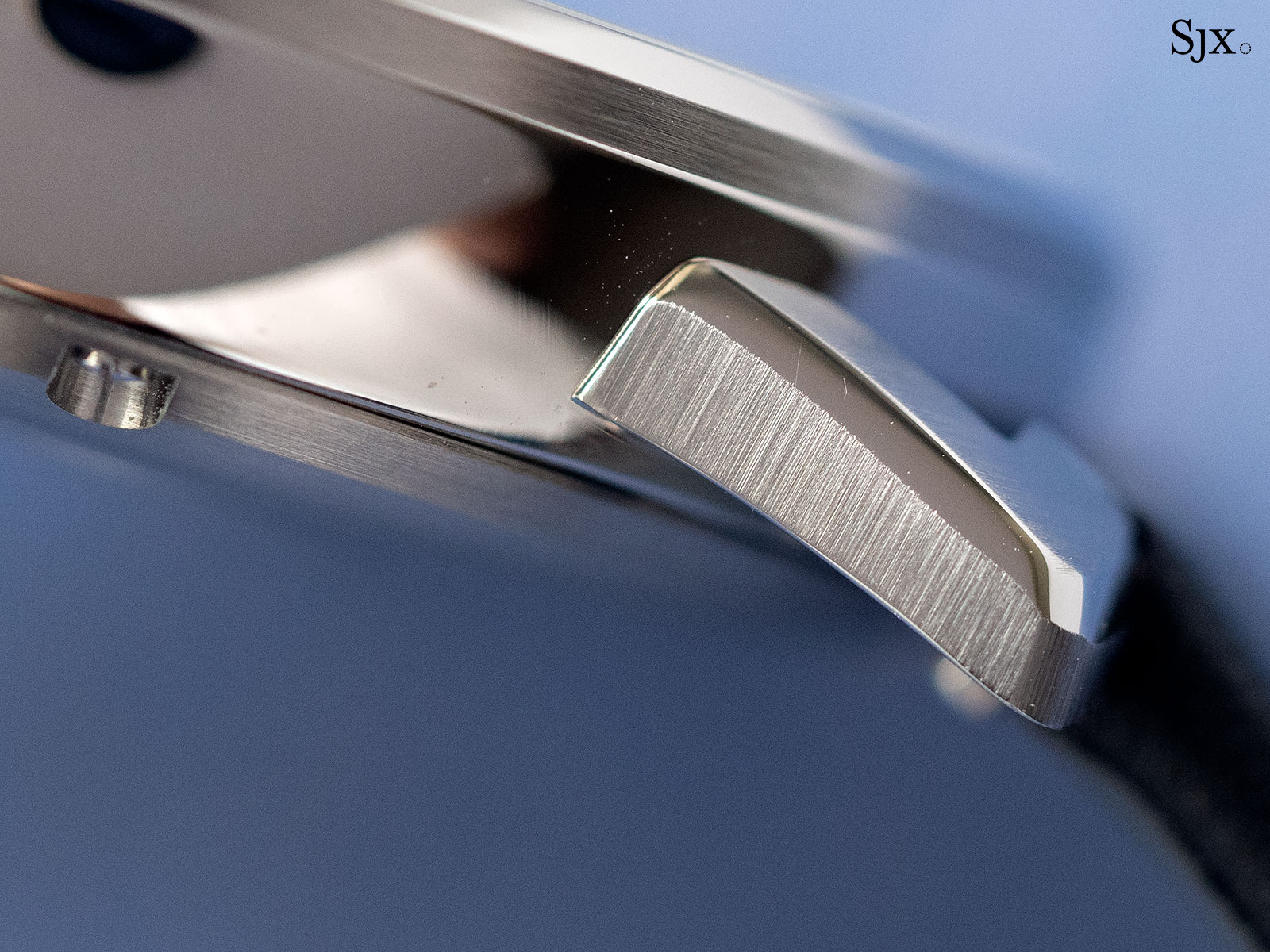
Measuring 39 mm by 9.74 mm, the case feels smaller than it is, while also being notably thin. The style of the lugs, particularly their thickness and how they flare outwards, make the case seem smaller in comparison. And the case sides curve gently inwards like a bowl, reducing the footprint of the watch.
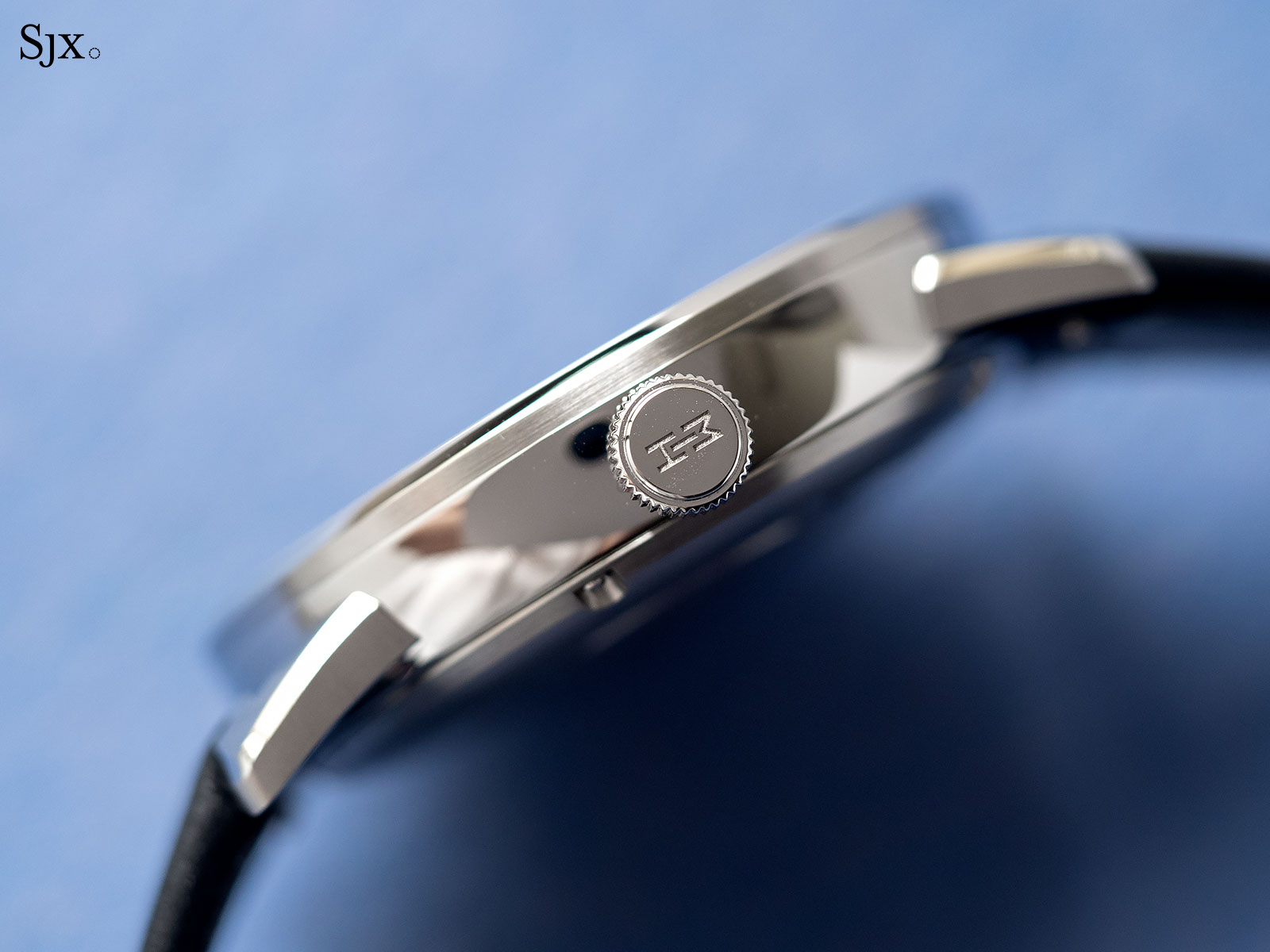
The case back is solid save for a narrow window that reveals the museum’s name on the rotor as it spins. It’s simply finished but inlaid with a medallion featuring the museum logo. Because the medallion is finished with a vertical brushing and sits ever so slightly above the back, it makes the back look a little more interesting and less flat.
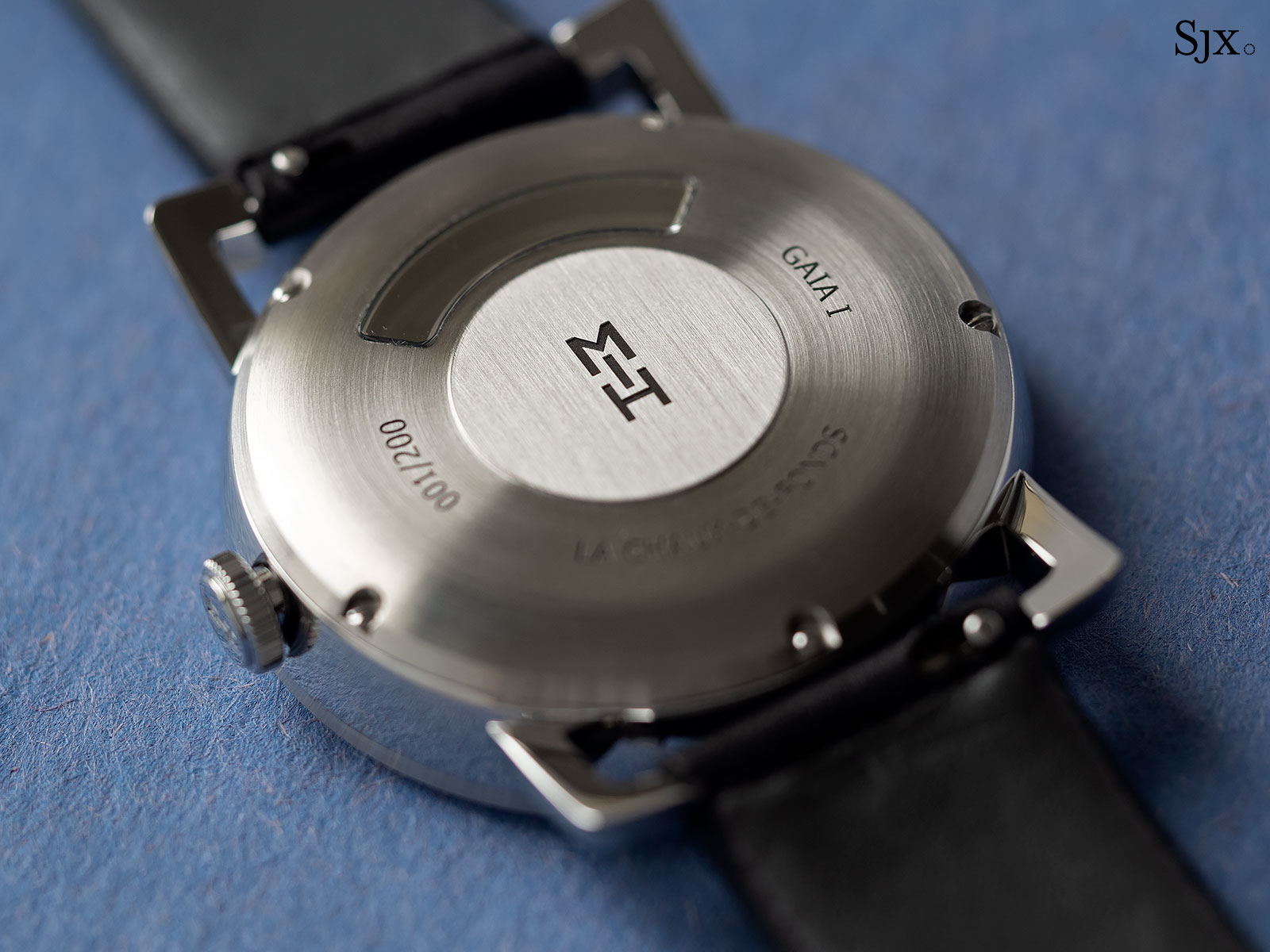
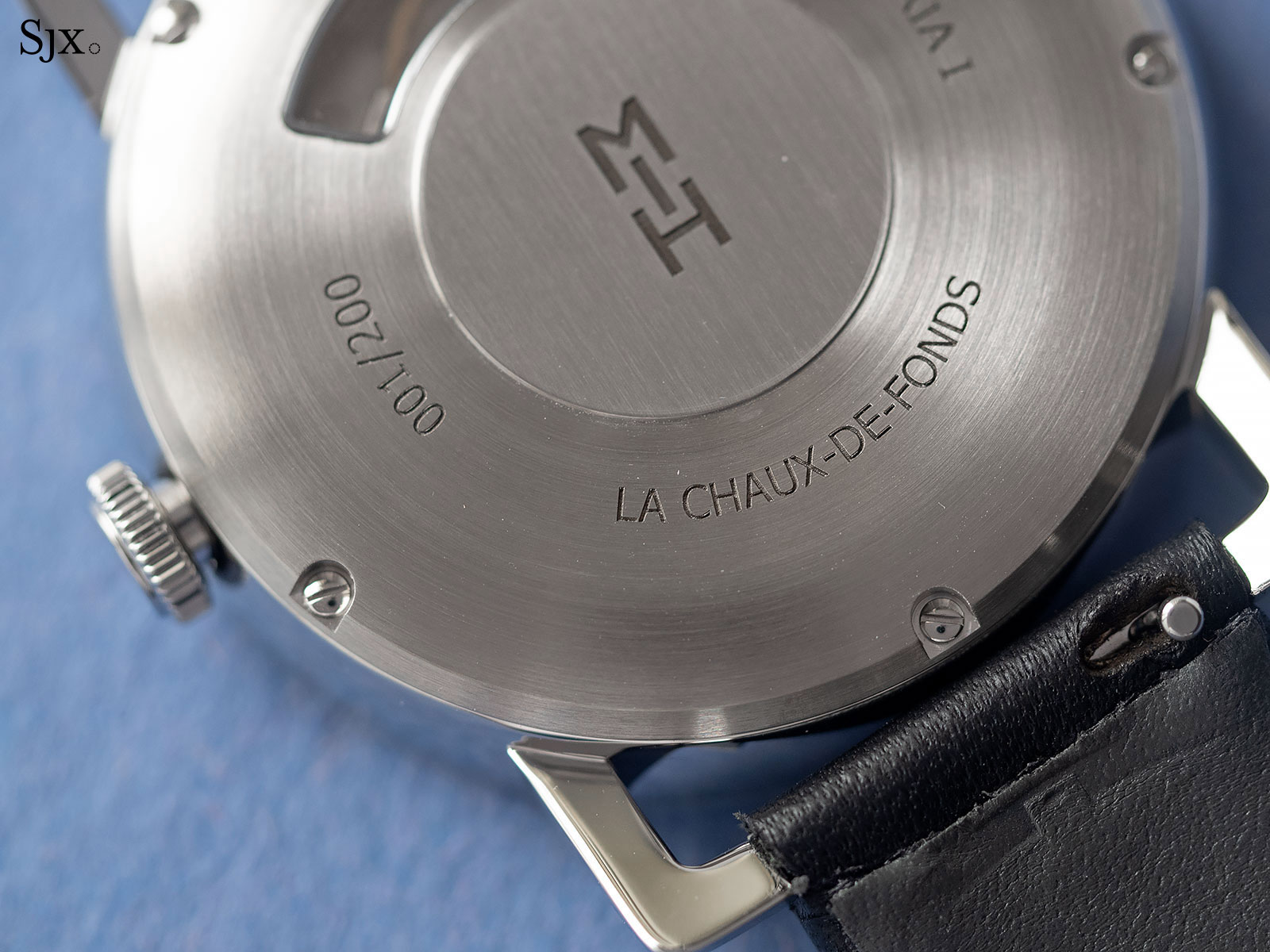
Underneath is a Sellita SW400-1, which is basically an upsized version of the SW200-1. That means an SW200-1 with an enlarged base plate, a feature developed specifically for larger watches with cases of 40 mm to 46 mm.
The mechanics of the movement remain the same, although the date of the SW400-1 sits closer to the edge of the dial on larger watches, resulting in better proportions and balance, but that is not relevant here since the Gaïa watch has no date.
The SW200-1 and SW400-1 are both clones of the ETA 2824, so they function identically. Robustness and reliability are excellent, but the power reserve is a short 38 hours. Overall, it’s par for the course at this price point.
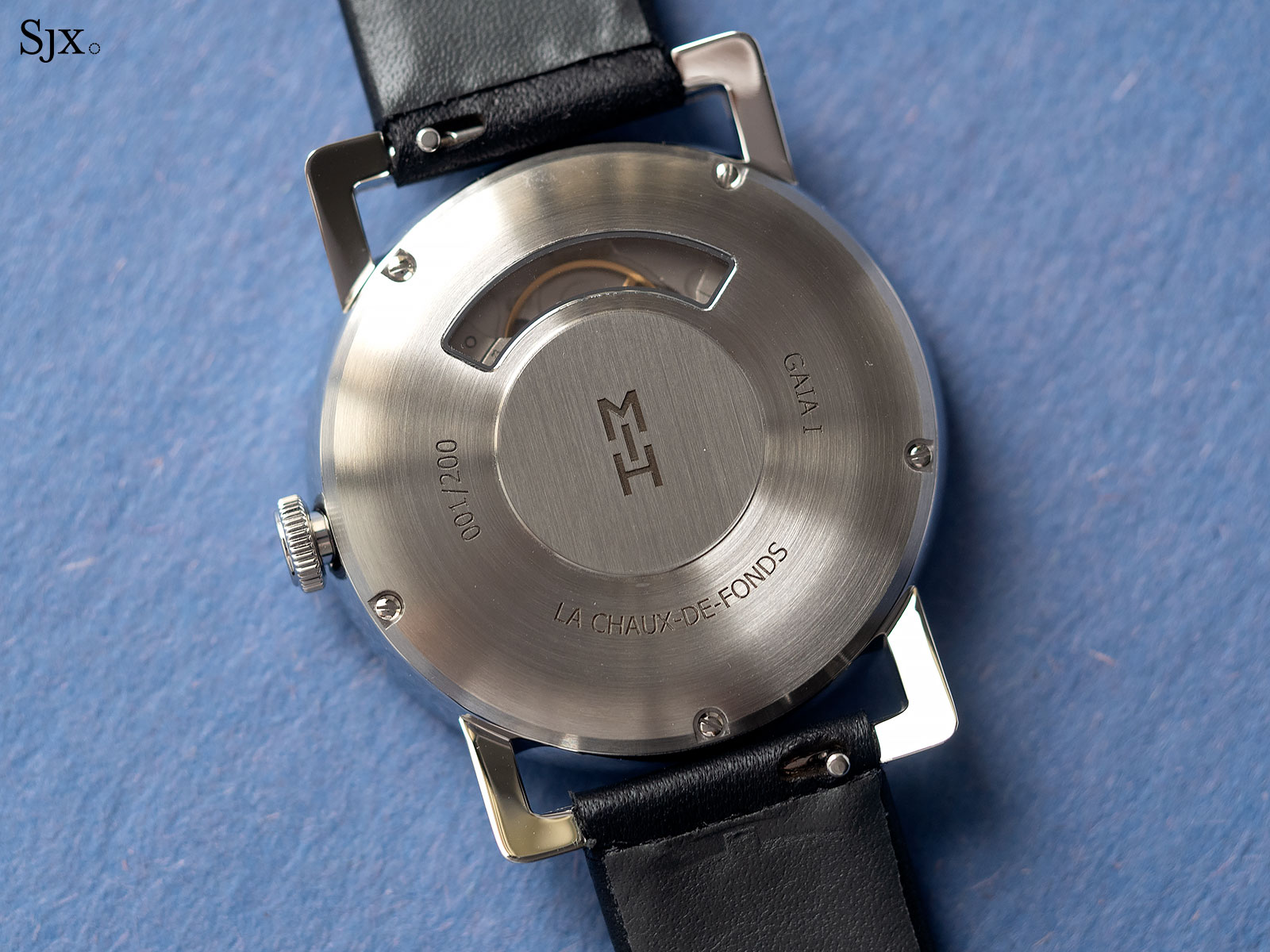
Concluding thoughts
The Gaïa watch has intrinsic appeal that’s enhanced by the fact that it supports a worthy horological cause. The watch itself is good looking – the design is thoughtful while the execution is excellent. And it is priced reasonably, albeit not inexpensively, but that is entirely acceptable since it is a means for the MIH to fund itself. Upcoming version of the watch will be worth keeping an eye out for.
Key facts and price
MIH Gaïa Series I
Diameter: 39 mm
Height: 9.74 mm
Material: Stainless steel
Crystal: Sapphire
Water resistance: 3 0m
Movement: Sellita SW400-1
Functions: Hours and minutes
Winding: Automatic
Frequency: 28,800 beats per hour (4 Hz)
Power reserve: 38 hours
Strap: Calfskin with steel pin buckle
Limited edition: 200 pieces
Availability: Sold out, but additional versions are forthcoming
Price: 2,900 Swiss francs before taxes
For more information, visit Montremih.ch.
Back to top.

